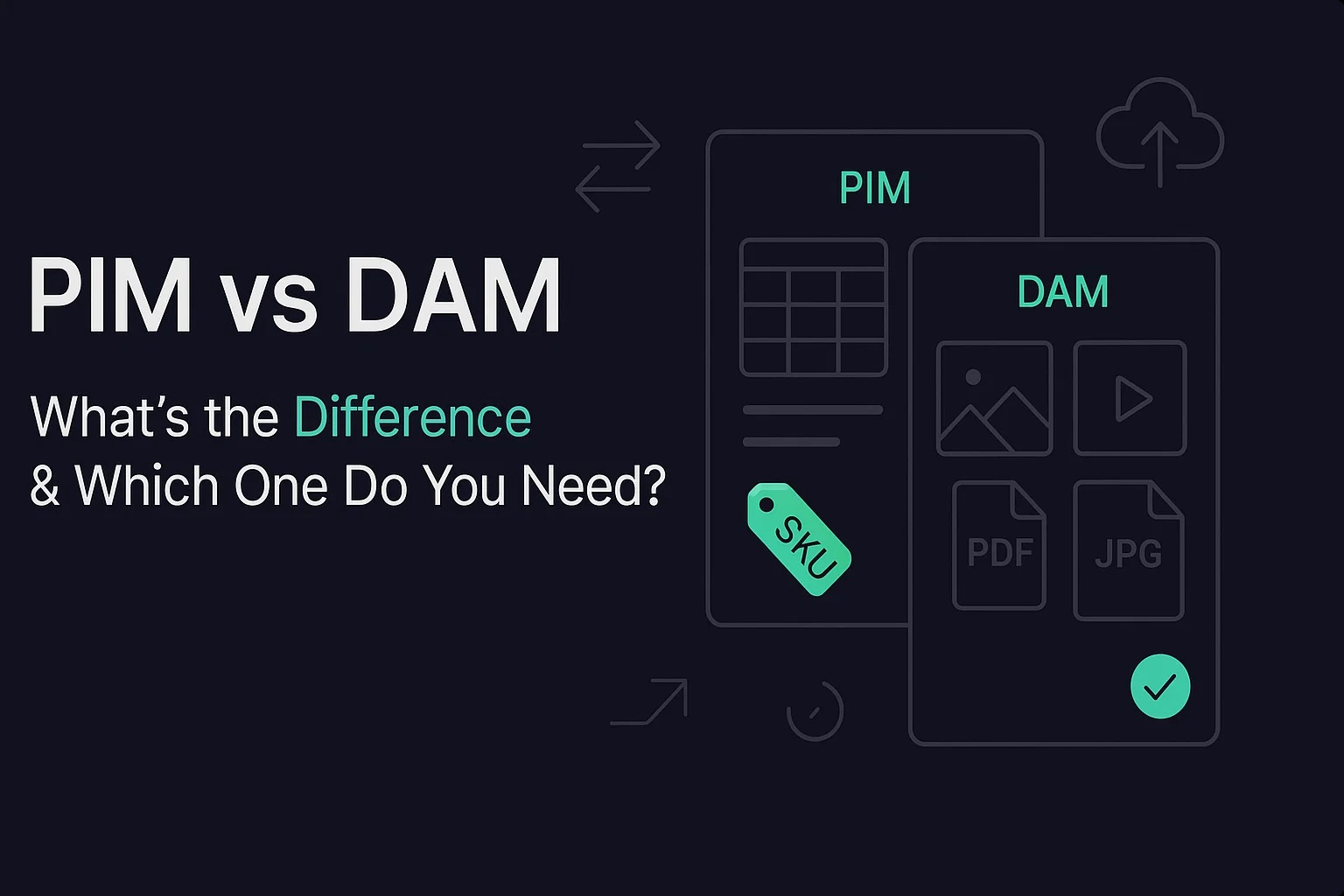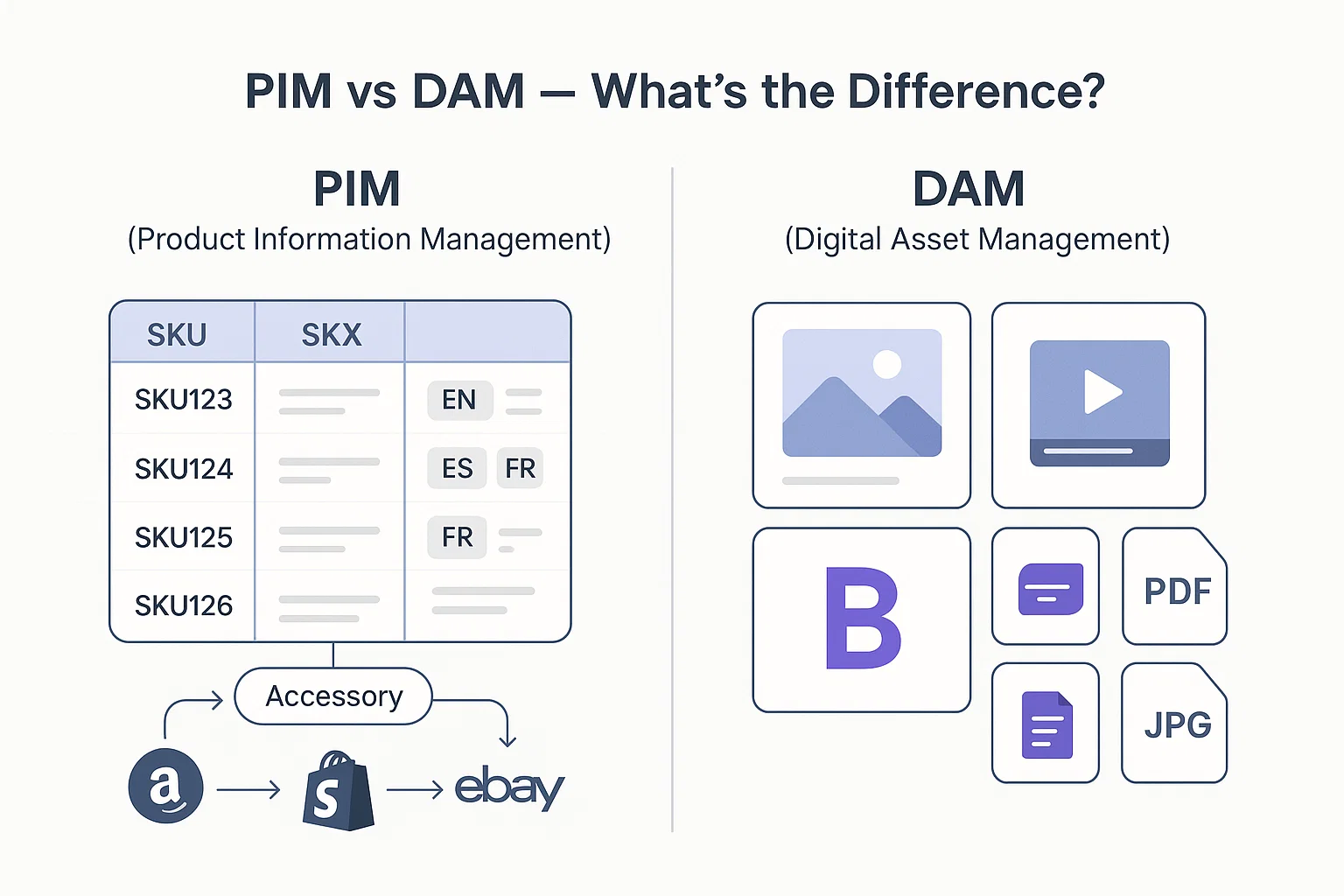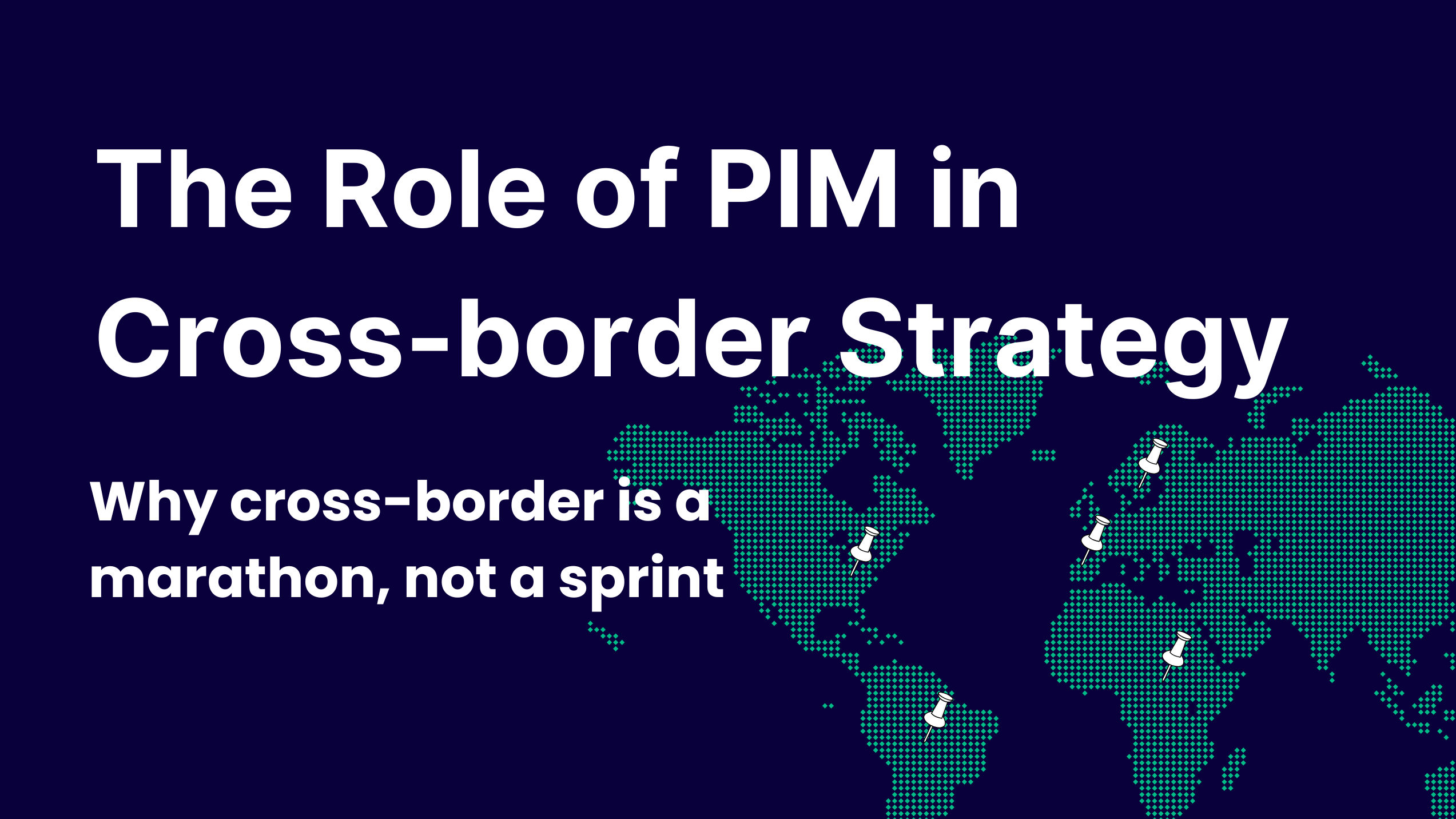PIM vs DAM: What's the difference and which one do you really need?

If you’re managing product content at scale—whether in ecommerce, manufacturing, or B2B—you’ve probably heard the terms PIM and DAM thrown around like interchangeable tools. But here’s the truth: while they both help organize your digital ecosystem, they solve very different problems. One manages your product data. The other handles your brand’s media assets. And choosing the right system—or combination of both—can be the difference between chaos and clarity across your sales channels. Let’s break down what each one does, where they overlap, and how to know which fits your business best.
Let's clear up the confusion
Ever found yourself deep in a product content conversation and someone says, "We need a DAM system!"—only for someone else to jump in with, "No, a PIM is what we really need!"?
You're not alone. These two terms—PIM (Product Information Management) and DAM (Digital Asset Management)—get thrown around a lot in ecommerce, manufacturing, and brand management circles. They sound similar. They even overlap a little. But they solve very different problems.
So let’s break it down. Plainly. No jargon, no fluff.
What is a PIM (Product Information Management)?
A PIM system is where you manage everything you want people to know about your product. It’s like the brain behind your product catalog.
Here’s what it usually handles:
- Product names, SKUs, specs, sizes, weights
- Localized descriptions in multiple languages
- Relationships (e.g., bundles, cross-sells)
- Categorization, filtering, and tagging
- SEO-rich content for search engines
- Channel-specific content (like different versions for Amazon vs Shopify)
Think of it this way:
If you're selling a bicycle, the PIM holds the specs—frame size, color, materials, gear details, warranty info, etc.
It’s especially useful when you’re managing hundreds or thousands of products across multiple sales channels.
What is a DAM (Digital Asset Management)?
A DAM system, on the other hand, manages everything you want people to see about your product.
That includes:
- Product images (packshots, lifestyle, 360° views)
- Videos (how-tos, demos, promos)
- Brand assets (logos, guidelines, banners)
- Documents (PDFs, manuals, certificates)
- Audio files or animations (if applicable)
Going back to the bicycle example:
The DAM would hold all your product photos, the lifestyle video of someone riding the bike, your brand's logo, and maybe even the spec sheet as a PDF.
It’s the visual warehouse of your brand.
DAM vs PIM: The core difference

So, what’s the difference between PIM and DAM?
Here’s the simplest way to look at it:
Both systems are complementary, not competitive. That’s what makes it tricky—most mature organizations actually need both.
Real-world example: Ecommerce product launch
Imagine launching 500 new SKUs across 3 languages on 5 marketplaces.
- Your PIM handles the structured product data—attributes, tags, localized names, short and long descriptions.
- Your DAM serves the optimized images and brand visuals to each marketplace, based on what their systems require.
They work together to deliver a complete, accurate, and engaging product experience.
What is PIM vs DAM in analytics?
This is where it gets a little nerdy—but still useful.
- A PIM can track completeness scores, enrichment levels, and time-to-market per product.
- A DAM often shows asset usage, downloads, rights management, and lifecycle metadata.
So, both can help in analytics, but they report on different types of information.
What about CMS vs DAM vs PIM?
Let’s quickly clear that up too:
- CMS (Content Management System): Used for managing content on websites (like WordPress, Drupal, etc.)
- PIM: Handles structured product data
- DAM: Manages media and digital assets
These systems often integrate with each other. In fact, Ergonode supports integrations with both DAM and CMS platforms to keep your content workflow smooth and scalable.
Do you need a PIM, a DAM, or both?
Let’s be real—most businesses don't have the budget or team size to adopt every system under the sun. So how do you know which one you really need?
Here’s a quick way to figure it out.
You probably need a PIM if:
- You manage hundreds or thousands of SKUs
- You sell across multiple channels (Amazon, Shopify, Magento, etc.)
- You’re struggling to keep product data consistent
- Your team is wasting time on spreadsheets or copy-paste chaos
- You’re localizing content for multiple languages or regions
You probably need a DAM if:
- You have lots of images, videos, PDFs, etc.
- Your creative team is constantly digging through shared drives or Dropbox
- You need version control, rights management, or usage tracking
- Your brand needs to stay visually consistent across channels
You definitely need both if:
- You’re in a mid- to large-sized ecommerce or manufacturing business
- You want to speed up time-to-market for product launches
- You’re aiming for better customer experience across digital touchpoints
- You want sales, marketing, and product teams to work seamlessly together
How Ergonode approaches PIM (and supports DAM)
At Ergonode, we focus on building a collaborative, user-friendly PIM that helps teams enrich, manage, and scale product information—without the usual friction.
But here’s something unique:
Ergonode also includes light DAM capabilities built right in.
You can:
- Upload and manage assets (like images and PDFs) alongside your product data
- Associate assets with specific products or product families
- Use AI to auto-generate descriptions based on structured attributes
- Automatically translate content across languages with a single click
So while Ergonode isn’t a full-blown DAM platform, it’s built to work smartly with your assets and integrate with more powerful DAMs when needed.
This hybrid approach is perfect for growing teams who want to start with a solid PIM, and evolve into a full PIM+DAM workflow as their needs mature.
A note for B2B, B2C, rental, and manufacturing businesses
Depending on your model, the priority may shift.
For B2B companies:
You’ll benefit most from a PIM-first strategy. B2B buyers care about accuracy—dimensions, specs, certifications. You need a system that centralizes and distributes structured technical content easily.
For B2C companies:
Visuals and storytelling matter more. A DAM can help polish your presentation, but without a PIM, scaling across channels and languages becomes messy. You likely need both systems integrated.
For rental businesses:
Managing availability, condition status, and usage metadata is key. A PIM helps organize product info, while DAM ensures customers see the right photos or videos of each rental asset. A tailored PIM+DAM workflow gives you clarity and agility.
For manufacturers:
PIM is critical for handling massive product hierarchies, technical data, and variant logic. DAM helps with visual documentation—assembly diagrams, safety videos, etc. Both are foundational.
What about scalability and automation?
This is where the modern PIM—like Ergonode—starts to shine.
We’ve built Ergonode with AI-native features because we know how repetitive and time-consuming content work can be. Things like:
- Auto-generating product descriptions from selected attributes
- Translating attributes into multiple languages in a click
- Measuring data completeness per product or channel
- Enabling role-based workflows so teams don’t step on each other’s toes
It's about working smarter, not just harder.
Final thoughts: You don’t need to choose PIM or DAM—you need the right balance
Here’s the honest truth.
PIM and DAM aren’t rivals. They’re teammates.
- A DAM without a PIM is like having a beautiful library with no catalog system.
- A PIM without a DAM is like having a catalog full of blank pages.
If you’re serious about scaling product content—whether across marketplaces, regions, or languages—you’ll eventually need both.
But if you’re looking to start somewhere smart, a PIM like Ergonode gives you the foundation.
It helps you build product content that’s:
- Accurate
- Localized
- Consistent
- And fast to publish everywhere
And with Ergonode’s built-in AI and asset management features, you get a big head start.
Ready to explore more?
If you're curious how a modern PIM could simplify your workflows, reduce manual work, and make your team actually enjoy product enrichment...
👉 Start exploring Ergonode today or request a demo. No pressure.
Or browse our resources hub for guides, use cases, and real-world success stories.






